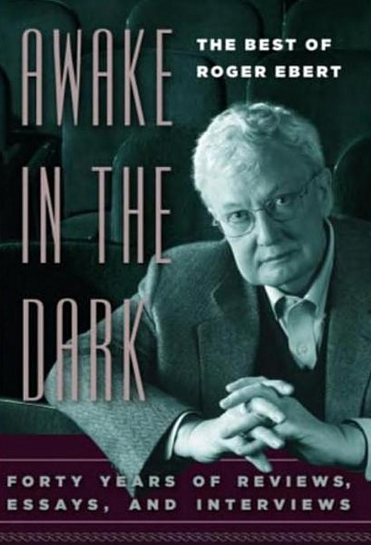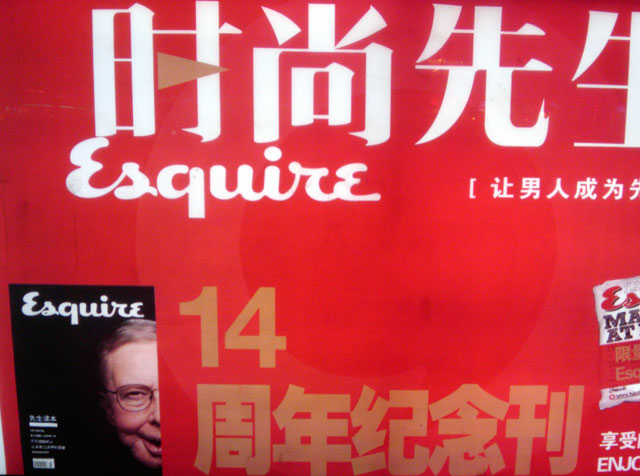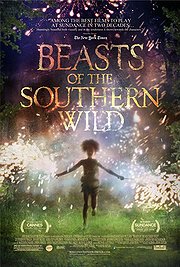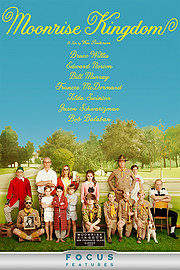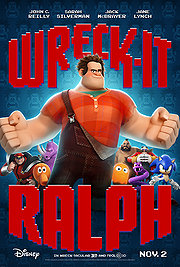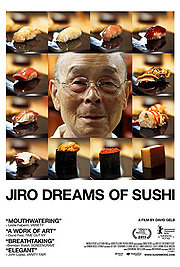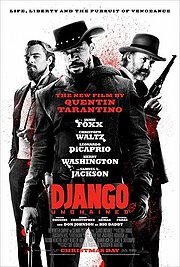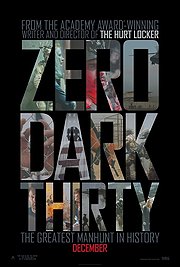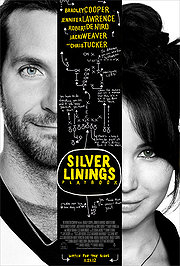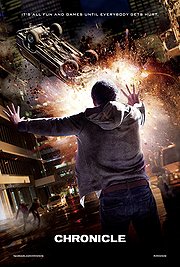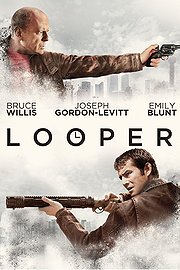I started Design Reactor in June 1997 with my partner Patrick Lee. Design Reactor eventually morphed in to Rotten Tomatoes (same team, same office) which I remained with until 2005 when I moved to China. Here are photos from our original Design Reactor (1997-2000) and Rotten Tomatoes (2000-2005) teams.
Crazy Rotten Tomatoes Halloween Parties
This is a fourth entry in my retrospective on stories from our early years founding Rotten Tomatoes as part of my #RottenTomatoesTurns20 20th anniversary series.
Most entrepreneur stories generally talk about the various steps of building a team, gaining customers, courting investors, blah blah blah. Certainly I have a lot of those stories, some of which I’ve already written about. However, a lot of my fond nostalgia from Rotten Tomatoes was the sense of closeness we had as a team and many of my memories are those spent with team mates when doing stuff outside of work. Main amongst these would be the Annual Rotten Tomatoes Halloween Party.
Prior to Rotten Tomatoes, Patrick and I had started Design Reactor in 1997, signing the lease for our first office in Berkeley (right above The Luggage Center on Shattuck Avenue) the day after my graduation ceremony. Our initial hiring strategy was basically to ask all of our talented friends at Cal who signed up for more traditional jobs to spend their off-hours doing contract web development and design work for us, folks like Senh Duong, John Joh, Eric Yeh, Walter Wu, Rae Chang, Susan Nakasora, Steven Kam, Derek Sakamoto, Suzanne Wood, Cynthia Sing, and others. Later on, as our Disney work expanded, the company became better established, and we had exhausted our first-line of friends who consisted largely of former dormmates, and fellow nerdy members of the Cal Wushu Team, we then extended further in to friends of friends and a second set of team members, but not too departed from our original networking. Brandon Sugiyama came and joined us from the University of Oregon Wushu Team. Mark Moran was originally from Washington and was practicing wushu in the Bay Area. Again, a lot of Wushu folks. Or friends of employees like Susan Nakasora. We did some rounds of hiring during Design Reactor for folks we didn’t already know but, in the end, it was all Cal grads including Boon Khoo, Michelle Lee, and Emily Lew.
So the story of Rotten Tomatoes is as much about the story about a group of college friends (primarily from Cal, and most with some connection to the Cal Wushu Team and, for the most part, Asian-American) as it is about the struggle to make our place in the film and internet industries. As such, our work environment was pretty atypical with our original office in Berkeley being a hangout spot for lots of our college mates.
Our first taste of success was during 1998 and 1999 at Design Reactor as our web development contracts with the movie studios like Disney and Warner Bros. grew and grew. We thought we’d do something fun after all of the hard work so we threw our first company Halloween party in 1999. Our team weren’t exactly the party experts — our prior experience running big events were for big Wushu-related performances or tournaments. We invited our friends to the party and allowed them to invite their friends but unofficially capped the invitations to just “first and second degree friends”. With our office in Berkeley, we held the party up at the Haas Clubhouse above the Cal campus, but as such it had to be an alcohol-free event. I don’t think any of us were particularly the drinking types back then so this resulted in a pretty tame event that ended prior to midnight.
1999 Design Reactor Halloween Party at Haas Clubhouse
In the subsequent years from 2000-2002 when we had switched over to doing Rotten Tomatoes, we didn’t hold any parties. In April 2000 just as we started doing Rotten Tomatoes full-time, the dotcom bubble popped and by the time Halloween rolled around, I don’t believe anyone was in the mood to celebrate. Similarly, Halloween 2001 was in the shadow of the 9/11 attacks so it would have been inappropriate to have a party. For Halloween 2002, I still remember going with friends to Castro District in costume — up till then, the Castro was the location for the largest street celebrations in the Bay Area, but it was announced that 2002 would be the last year where the city would be doing the celebration in the Castro.
Knowing that we wouldn’t be able to celebrate Halloween in the Castro the following year, Patrick and I decided that we would put on a Rotten Tomatoes Halloween party for our friends just like we had done so for Design Reactor. The same rules were employed as for our first party in 1999 (except this time via Evite): a free party for our first and second degree friends, our company would pay the budget for the venue,decorations, and free first drinks, and, most importantly, wearing a costume was MANDATORY for entry to the party.
The first Rotten Tomatoes Halloween Party had added urgency: In the months leading up to the party, Senh, our senior engineer James Chen, and I had worked hard to develop “The Vine” and we set our deadline for launch as Halloween. “The Vine” was Rotten Tomatoes’ short-lived attempt at doing a social network for movies, music, and video games. We were really influenced by both Friendster and Xanga and wanted to create a place where entertainment fans could share their own movie/music/video game ratings, reviews, and “Top Ten Lists” with others in a blog-like feed format. It was the largest addition to Rotten Tomatoes that we had developed since expanding Rotten Tomatoes to include 80,000+ titles in the early days and we were eager to get it launched and share the new social network with our friends.
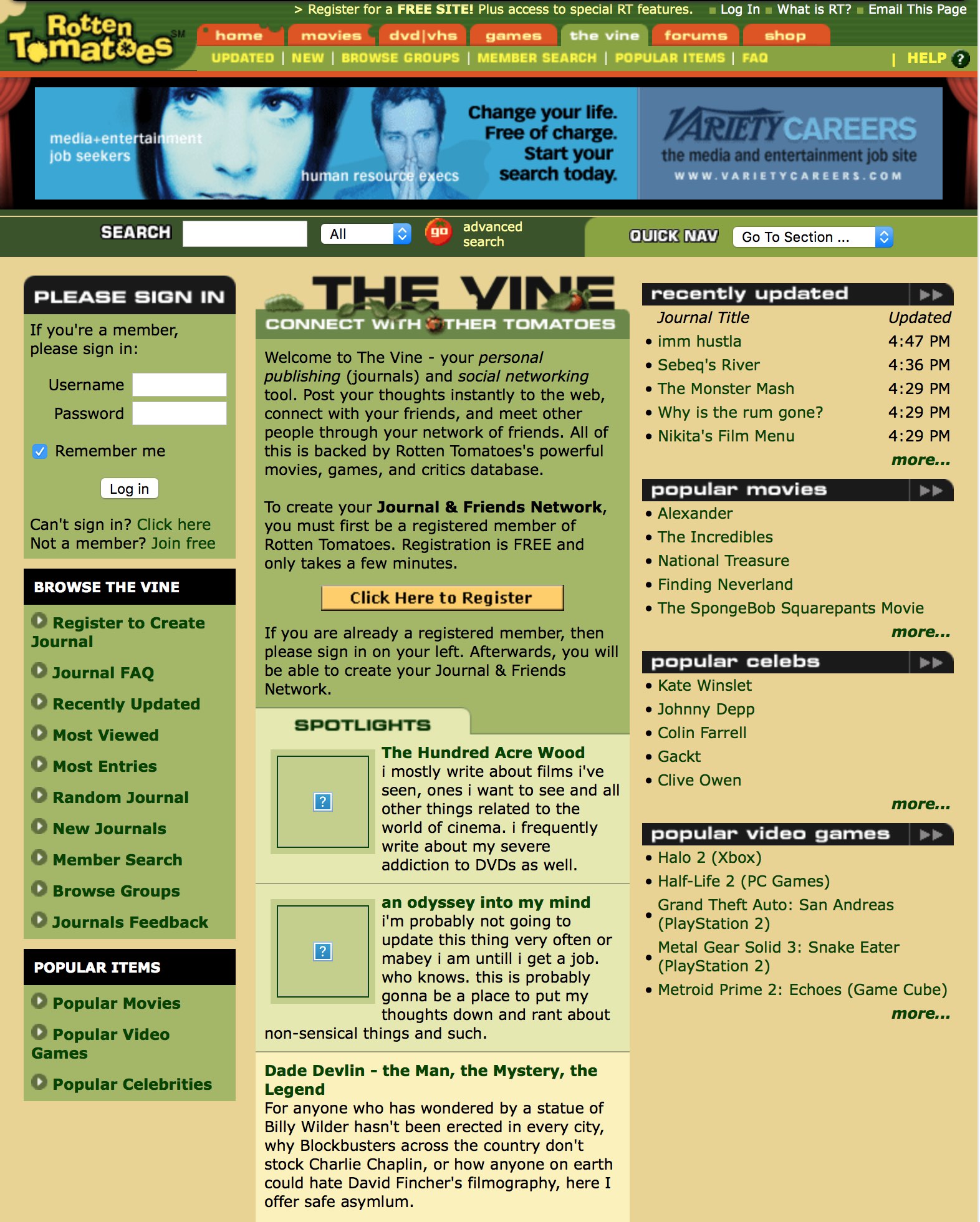
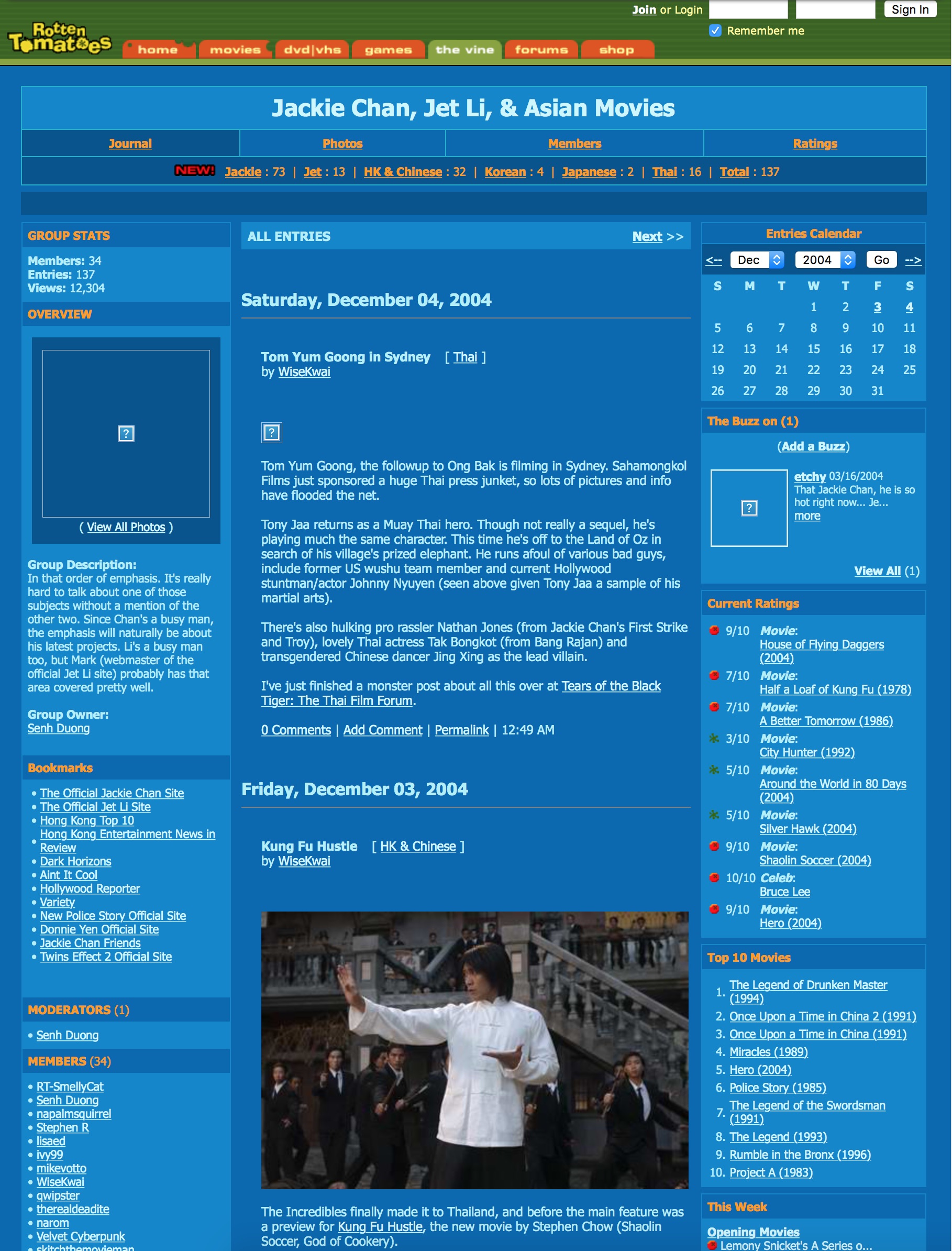
Prior to the party in 2003, we were spending many sleepless nights getting The Vine ready and finally launched the feature the day before the Halloween Party.
Exhausted by developing The Vine, we were lucky to have the help of friends from our Cal Wushu Team community to help organize the 2003 party at Mix 26, a bar in the Mission District. Altogether, I believe we had about 300-400 friends show up to our first Rotten Tomatoes Halloween Party and it was the first chance after a long time for the Rotten Tomatoes team and friends to celebrate a bit after several years of arduous work and a challenging business environment.
2003 Annual Rotten Tomatoes Halloween Party at Mix26
Over the following years, the Annual Rotten Tomatoes Halloween Party got larger and larger. We would carry over the invitation list from the previous year and allow prior attendees to invite their first-degree friends which resulted in more and more attendees organically growing year-after-year (kind of like a social network).
In 2004, we moved from a small bar in the Mission over to Suede, a much, much larger nightclub near Fisherman’s Wharf for our second Annual Rotten Tomatoes Halloween Party. By this time, Rotten Tomatoes had been acquired by IGN so we really in the mood to celebrate. Early on in the party, we quickly realized that the party was going to be way more crazy than the year before. I realized that things had kind of gotten out of control when we had the first person pass out drunk in the bathroom by 10pm literally an hour after opening up the door. The line to get into the party at 9pm snaked around the block and I believe we eventually had over 1,000 people attend making it the largest Halloween event in San Francisco that year.
2004 Annual Rotten Tomatoes Halloween Party at Suede
The last Rotten Tomatoes party I helped organize was in 2005. By this time, we had moved to Studio Z (across from DNA Lounge) in the heart of the clubbing area of San Francisco. By this point, our Annual Halloween Party had become a tradition unto itself that was known separately from just Rotten Tomatoes as a company. People were getting elaborate costumes (again, costumes mandatory) prepared almost immediately after the end of the party from the prior year. Each annual Halloween party became larger and more elaborate than the one before.
2005 Annual Rotten Tomatoes Halloween Party at Studio Z
At this last party in 2005, I had already known that I would be leaving Rotten Tomatoes by the end of the year to join Patrick at his startup in China; however, the annual Rotten Tomatoes continued for another two or three years after I left.
The Halloween parties were a way to show our appreciation for all of our friends who had supported the Design Reactor and Rotten Tomatoes team through the years. We all started out as college buddies and Halloween gave us all an excuse to celebrate and dress up in elaborate, movie-related costumes. The legacy of the Rotten Tomatoes Halloween parties hold a fond place in my memory as important to me as the war stories about doing business or developing tech.
Special thanks to Brandon Sugiyama, Kevin Morris, and James Yang, the three amigos who helped us every year to throw these awesome parties.
Postscript: After Rotten Tomatoes, Patrick and I moved to Asia where we did another company, alivenotdead.com, a social network for celebrities and artists in Asia. In 2008, alivenotdead held it’s first “Dead Not Alive Halloween Party”. Just like the Rotten Tomatoes Halloween Party, the party was also “costumes mandatory” and initially done as a celebration to thank our friends. Over the years, however, the “Dead Not Alive Halloween Party” has grown in to an annual event much larger than anything that we ever did under Rotten Tomatoes — a commercial success unto itself and the most popular Halloween party in Hong Kong largely due to the tireless efforts of Raffi Kamalian who attended many of our prior Halloween Parties in the Bay Area. It’s hard to believe that we just celebrated the 10th Annual Halloween Party here in Asia but, believe it or not, the roots for this annual extravaganza runs all the way back to that first alcohol-free on-campus Halloween Party we threw for our friends in 1999.
For more of my Rotten Tomatoes 20th anniversary articles, check out my other memories.
Tomatometer tech everywhere: From Netflix to adult film sites
With Rotten Tomatoes’ 20th anniversary rapidly approaching, I’ve decided to chronicle some old tales from when we were fresh, young tomatoes full of vigor and energy. My last blog entry covered the early, whirlwind days leading up to our first (and only) round of investment and the decision to switch from our successful and growing web design firm, Design Reactor, over to doing Rotten Tomatoes as a new venture in April 2001.
We were riding high from the rush of closing our investment and finally getting to work full-time on a project that we believed in. The new round of investment meant that we could finally begin building for the future — placing some investements into long-term tech that would allow us to build Rotten Tomatoes from a “hobby-site” in to a full-fledged company.
Building out the Nerdy, Technical Details
First, as I had previously mentioned, we had previously been letting our server bandwidth ride off of the dual T1 broadband lines installed into our office that Disney paid for as part of us developing and staging Disney Channel (and now ABC’s) web sites. Now that we shifted to Rotten Tomatoes’ full-time, we had to find alternate hosting. This wasn’t a small decision — at the time, all of the IDCs (internet data centers) were also finding plentiful business from all of the dotcoms sprouting in the valley. This was before all of the cloud services like Amazon Web Services where you pay on a “pay-per-usage” basis. We ultimately signed a five-year lease with AboveNet, one of the early data center pioneers in San Jose. Even with a “friendly” contract, it was still $1000 per month per Mbps (we were using 5Mbps at the time) AND a server rack leasing fee. It was kind of a shock to sign a contract that would essentially obligate us to pay half a million dollars over the next five years (or little less than half of our first and only round of investment).
It was also the start of my self-learning on the nitty, gritty internals of server installation and maintenance. Again, back in the days pre-cloud, running a web server meant that I had to drive down to Fremont to pick up the actual rackmount servers from the warehouse and bring them back to the office for installation. Another major expense — each server was around $4000 each and our very first rack installation ran off of four servers. Over time, we were adding an additional one or two servers per quarter just to keep up with traffic ending up with about 24 servers by the time I had left. One of the major early technical changes was to shift the entire Rotten Tomatoes web site from running off of Microsoft IIS (Microsoft’s early web server software on Windows NT) over to running off of the now classic LAMP (Linux, Apache, Mysql, PHP – later, switching out Apache for Nginx) stack. The Microsoft stack was sufficient in Rotten Tomatoes’ early days when we were only covering a few movies opening every week with standard HTML templates and server-side includes, but we knew after investment that we’d have to run a professional, database-driven web site that could cover much more. This was all my crash course on how to set up and maintain Linux servers.
The rest of the tech team that I managed worked hard on programming, particularly with George Nguyen handling a lot of the PHP development on our content mangement platform, Eric Yeh doing a lot of database and performance optimization, Pongky Nataatmaja doing front-end PHP and template coding. Also, special thanks to Kai Chang who also did additional PHP coding and a special shout out to Suzanne Wood — she started out as our office manager during Design Reactor, but expressed sincere interest in becoming a developer despite not having a technical background. She interned under Eric and became a full-fledged engineer in our team, leaving the team to pursue a master and PhD in AI and cognitive science (Patrick’s field of study).
Rotten Tomatoes up until this point had been running essentially as a static web site with new web pages added for each movie released. We wanted to be a useful resource for all movies, not just new movies, so we set out to fill the database of movies from the past (catalogue movies, as we called them). Our purpose wasn’t to compete with our major competitor, IMDb, in terms of comprehensiveness. Instead, we aimed to have the basic information available so that film critics reviews for prior movies could be more easily aggregated under the same film title and so that users could find the basic information about the movie to decide whether they wanted to watch it or not. At the time, there were basically only two licensees of movie information with comprehensive data, both set up primarily for retail vendors like Tower Records to offer DVDs: All Movies Guide and Muze. Selecting a data vendor is a pretty momentous decision — all of the information such as cast, crew, genre, etc. pretty much determines the way that you structure your database and how users will be able to navigate your movie information. We ultimate signed a three-year agreement with Muze for another $5,500/month, another nearly $200K contract signed over in our early days. Thanks a ton to George and Kai who immediately set about to integrate the Muze database in to our content management system which we called “Webfarm”. It expanded our coverage of movies from about 1,000 movies pre-Muze to over 80,000 titles (most of them direct-to-DVD releases) as well as a easier way for our editors to use a web interface to edit or add movie information in to our own movies database.
Lastly, we knew that we had to be able to “scale-up” our coverage of movie reviews, particularly as we had just licensed a full 80,000+ title database. Early on, we were primarily bottlenecked on our editorial side where Senh Duong, Binh Ngo, Susan Nakasora, and others were spending sleepless nights selecting quotations and placing ratings on hundreds of movie reviews per movies. We addressed the problem temporarily in the summer of 2000 by hiring four summer interns from nearby Cal to help on the quote selection during the summer movie season, but the workload was too high. At the time, Rotten Tomatoes had a competitor web site the Movie Review Query Engine (MRQE) run by a single engineer in Pennsylvania, Stewart Clamen. Stewart had written a web crawler that crawled hundreds of different web sites and grab links, ratings (when available), and author information for all of the web sites’ movie reviews. MRQE was a night-time hobby for Stewart in addition to his day job as a programmer, and at the time he had no plans to make an independent business out of his hobby site. MRQE had just the data we needed in order to en-masse pair hundreds of thousands of links to movie reviews to all of the titles provided by Muze. In these early days of the internet, there was still a lot of good will between “hobby sites” such as MRQE and Rotten Tomatoes so Stewart gave us the astoundingly good price of $1000/month to license his data, whose comprehensiveness was pretty vital to our early growth. I think he just felt comfortable with Senh, Patrick, and I as “good guy” movie fans trying to build something useful and partially because neither side (MRQE nor Rotten Tomatoes) was 100% comfortable about the legality at the time of aggregating links and data from the open web like we were doing so were more willing to spread the risk around. In any case, our MRQE and Muze licensing relationships lasted through the full six years that I remained with Rotten Tomatoes and were fundamental to being able to turn Rotten Tomatoes from a hobby static page web site in to a useful, professional, and comprehensive resource for movies.
With the licensing of data from Muze and MRQE along with the construction of our “Webfarm” content management system (CMS), we were able to create a full flow for our editorial that covered the full history and catalogue of movies. Muze covered basically any title that was available on DVD (almost the full history of movies). MRQE was indexed movies by their IMDb ID so as we got movie reviews in from MRQE, we would have to match up the movie’s IMDb ID within the MRQE feed over to the appropriate Muze ID in addition to matching up the film critic and publication to our internal ID system. For movies in the MRQE datafeed that didn’t match up to a Muze ID, we would have to either manually search Muze and IMDb for the appropriate film titles and create an alias or we would have to create a whole new custom movie entry in our database (the case for many independent or film festival titles that didn’t have Muze entries yet) and eventually consolidate them when Muze eventually did create an entry. This was basically how we were able to rapidly populate up to 20,000+ films with Tomatometer reviews over the course of a few months using the small handful of editors that we had started out with.
As time went on, we used the increase in editorial productivity to tackle not just films already released, but to cover films while they were just gettting announced or in production. As aforementioned, our Webfarm system enabled us to scan Variety and The Hollywood Reporter on a regular basis and add newly announced productions in to our system. This was an important element to our traffic growth — by being amongst the first web sites to actually have a web page created for these newly announced titles, the other movie web sites such as IMDb or search engines would begin linking to us eventually leading to our film page showing up amongst the top search results when searching for the movie.
Now with the coverage of not just newly released movies, but also catalogue movies and recently announced movies, we achieved our goal of becoming a fully comprehensive resource for all movies.With our comprehensive movie data, more and more sites began reaching out to us as a movie resource within their own services. Initially, we were happy when other, bigger companies began freely linking to us: Google Desktop in 2002, an early desktop search widget, began providing Rotten Tomatoes data whenever you searched for movies. Our neighbor in Emeryville, Ask Jeeves also began freely displaying the Tomatometer in their movie search results. The added demand for our movies and Tomatometer data led me to establish our data licensing business where we exported basic movie data, Tomatometer ratings, and review ratings and links. For a period, we had Netflix, Microsoft (via their WebTV product), and Adobe/Macromedia, and others all paying a monthly licensing fee to use and display Rotten Tomatoes on their respective services. We also had both Variety and The Hollywood Reporter licensing our Tomatometer data to display in their respective publications and web sites, a way to get the Tomatometer better accepted in the film industry as a standard. Of course, later other notable services such as Apple iTunes also began using the Tomatometer within their services.

Here’s a fun story: During the tough times around 2002 when I just got started on data licensing, we were approached to build a “white label” Rotten Tomatoes web site for the world’s largest network of adult web sites at the time, controlling a network of over 300 popular porn web sites. I never actually met my contact face-to-face and it appeared that the small number of web site operators were all spread over the country working remotely. Nonetheless, their request was simple and clean — they were willing to pay us to create a version of Rotten Tomatoes with no branding (neither Rotten Tomaotes’ nor their own) but presented the Tomatometer and links for new movies just like Rotten Tomatoes that they could host on their own servers. Their rationale was that they felt that their porn web sites had relatively short session times and they wanted to explore more forms of content that would interest users in staying on their sites for longer even if they were devoid of porn or advertising. Seeing as how there wouldn’t be any objectionable content or branding on these white label pages, we eventually agreed to their terms. Despite being in a questionable industry, they were a near-perfect data licensing customer and comprised about 30% of our data licensing revenues over several years and paying their fees like clockwork every month. They even would all us and renew their licensing contract for the same terms a full 60 days BEFORE the expiration of their contracts. What a great customer!
The early days of Rotten Tomatoes immediately after our investment were spent building up the site from a hobby in to a full fledged business. We applied to tech to not just keep our team relatively small, but also to make Rotten Tomatoes a comprehensive resource for all movies and, eventually, leveraging that tech and data into its own revenue stream via data licensing. The data licensing had a side benefit of getting the Tomatometer more broadly distributed across other resources such as industry publications, search engines, and movie destinations like Netflix and iTunes and played an important role in making Rotten Tomatoes the industry-accepted standard it is today.
Footnote: Yes, there was a brief time that Netflix presented the Tomatometer and critic review quotations when you ordered movies. I was an early Netflix fan before the time of streaming downloads and back when they delivered DVDs in the mail via the “red envelopes”. In 2002, just as we were getting our data licensing program ramped up, Netflix contacted us out-of-the-blue and asked whether the Tomatometer to Netflix’s movie pages. From 2002 until 2005 (or 2006?), Netflix presented a fresh or rotten tomato, Tomatometer rating, and few select Cream of the Crop critic quotations and links within their movie pages via our data licensing. It was great to have Netflix as an early paying customer of our data licensing program. I found it to be really helpful when selecting movies, but I believe around 2005-06, Netflix wanted to tilt more heavily into their content recommendation system (even running the “Netflix Prize” to improve their recommendation algorithms) and subsequently removed the Tomatometer from their pages.
For more of my Rotten Tomatoes 20th anniversary articles, check out my other memories.
Starting down the path of Rotten Tomatoes
With Rotten Tomatoes‘ 20th anniversary rapidly approaching, I’ve decided to do a retrospective on my memories from our early days of Rotten Tomatoes. As a Rotten Tomatoes founder along with my partners Patrick Lee and Senh Duong, I’ve never really had a chance to document some of the stories from our early days. I ask for forgiveness in advance if there are errors as I’m trying to recall details from 20 or more years ago, really a lifetime in internet years (and yet I still feel like it was all so recent).
Watching Star Wars: Episode I: The Phantom Menace, released in the summer of 1999, was a life-changing moment for me. No, the movie was an utter letdown for a life-long Star Wars fan like me, but I thank George Lucas for making such a mediocre movie as the online reaction to the movie helped change my mindset about what I wanted to do in life.
In May 1999, the week before Episode I came out, I got to see the film at an early, private radio promotion screening that also had a few film critics in attendance. When Rotten Tomatoes co-founder Senh asked me earlier in the week whether I wanted to catch a sneak preview of the most anticipated movie of my life (and probably in all of history), of course I replied ‘yes’ and I made the 90 minute drive alone from the San Francisco Bay Area up to Sacramento.
Senh had launched Rotten Tomatoes nearly a year earlier as a hobby project while working at our web agency at the time. Design Reactor, which our third Rotten Tomatoes co-founder and I had started right after my graduation from Cal in 1997, was making rapid headway as the lead web development agency for Disney Channel and at the time I was making a weekly trip back and forth between the Bay Area and Burbank happy and proud to be working for such a prominent client in the field that I loved.

Nonetheless, the many sleepless nights of hard work with little outside recognition must had worn down Senh early on. In August 1998 (now 20 years ago!), he had come up with the idea for Rotten Tomatoes. Really, it was quite a genius, thinking out-side-the-box idea at the time and I’m quite envious that I hadn’t thought about it before. Both Senh and I are super movie afficianados. Senh is ethnically Chinese but from Vietnam with a short interlude in Hong Kong before arriving in the relatively rural Sacramento in the 1980’s. For Senh, 80s action stars like Schwarzenegger and Stallone play such a pivotal part of not just his childhood, but also his general perception of Hollywood and America overall. In the same vein, I was equally a movie fan, but my tastes were much more diverse. Senh and I could talk endlessly about our favorite films and directors, but I was also obsessive about small films from mini-majors and indie productions.
I was born in Ohio, but raised in suburban Maryland. When summers rolled around, my brothers and I would live Los Angeles in the increasingly immigrant Chinese community of Alhambra to see my father. As all my school friends were in Maryland rather than LA, with the lack of friends nearby, my brother and I basically spent every summer going to the movie theater and watching tons of summer movies of every sort. For him, it turned in to a profession as he chased his moviemaking dreams in Hollywood after college. For me, it meant that movies were always a major part of my life, even after I began chasing my dotcom dreams in college. It was a point of pride for me to have Disney as my major client so soon after graduating college that, unlike Senh, I didn’t really think much of building something “even greater”.
For Senh, however, he had more of an “artist” mentality (very similar to a “founder” mentality) and wasn’t content with essentially working as “affordable labor” for Disney. We couldn’t even publicly claim our hard efforts building such breakthrough projects as Zoog Disney, ToonDisney.com, DisneyChannel.com, and eventually much of ABC.com. When Jackie Chan, his Hong Kong film idol, was about to star in Rush Hour, his first major Hollywood movie, Senh devoted his time to building his version of a “fan page”. He collected all of the news articles and film reviews in the weeks preceding the movie’s release and put them on a single page. In reality, while he meant to build a site for Rush Hour, since the film’s release got delayed, he actually continued the process of aggregating different review quotations and news headlines for other movies about to release. The first film page to launch was Neil Labute’s Your Friends & Neighbors, and by the time it had launched on August 13, 1998, he had already come up with some of Rotten Tomatoes’ key elements: The Tomatometer, Fresh and Rotten icons for reviews, review quotations and links, and the “Rotten Tomatoes” name. Senh had even registered the domain name rotten-tomatoes.com for his new web site. He began posting links to the aggregated Rotten Tomatoes movie review pages to the rec.arts.movies newsgroup and getting decent response from other newsgroup participants.
Early on, I had concerns about the legality of “aggregating quotations and links”. In those early days, the closest comparison would be the Drudge Report, but the quotation aggregation that Senh was doing was even riskier. It’s a commonplace practice now and commonly considered as covered legally under “Fair Use”, but back then it was still indeterminate. I think Senh’s “immigrant outsider” background and his artist mentality were important — they allowed him to think “outside-of-the-box” and make the important leap to come up something wholly new and innovative by aggregating this quotations, links, and ratings into the Tomatometer where as someone like me born and raised in the U.S. would have considered it too legally risky.
In the subsequent months, Senh’s “Jackie Chan fan project” blossomed in to his passion. He dedicated more and more of his time to updating and expanding Rotten Tomatoes including spending daytime going to the Berkeley Public Library to manually cull quotes from print newspapers and magazines (many of which hadn’t gone online yet in 1998) and all-nighters on the critical Thursday nights before movie openings on Fridays. At the same time, though, our little web design firm Design Reactor, had finally landed on the rollercoaster growth path as our initially small business with Disney Channel blossomed into becoming the primary web agency for the whole of Disney Cable Television. In the several months following the launch of Rotten Tomatoes, our company grew from 6 or 7 employees to 20-plus employees and interns and landed a seven-figure, yearlong deal with Disney to maintain and expand the whole of Disney Channel and affiliated web sites. During all of this, Senh became less and less interested in “working for Disney” and more and more obsessed with Rotten Tomatoes. Being a fan of movies and a fan of the web site, I helped initially by helping to do some minor programming, hosting the web site on our Design Reactor servers, and making the process easier for Senh by changing his manual HTML pages to more maintainable and reuseable templates. Nonetheless, both Patrick and I could clear see that Senh’s interest in Design Reactor was waning so we asked him to leave the company and so he could work full-time pursuing his Rotten Tomaotes passion and so that we could bring in a replacement as Creative Director (Joe Huang) who could dedicate his time to our growing web design company.
Instead of hanging around the Bay Area and helping us grow Design Reactor, Senh decided to move back to Sacramento and teamed up with his high school classmates Binh Ngo and Bobby Lee to continue running Rotten Tomatoes from Senh’s garage. In the first couple of months after departing Design Reactor, I don’t think Senh was even 100% certain about using his time to make Rotten Tomatoes a business. There was a short period of time during those early months where the three of them decided to shoot a movie together rather than continue updating Rotten Tomatoes and, as a consequence, there were no updates to the site for several weeks, though they resumed after deciding to not film the indie movie.
At the same time that Senh, Binh, and Bobby were updating Rotten Tomatoes from Sacramento, I was getting run down by my weekly trips between the Bay Area and Burbank simultaneously growing our Disney business to cover Disney Channel, Zoog Disney, and Toon Disney and producing two new Flash/Shockwave games for them every week. All of the newfound business from Disney allowed us to move to professional high rise offices in Emeryville and hire a professional CFO for the company. Despite our success with Design Reactor, I was begining to get run down by the constant client-handling and envious of being able to build and own our own property like Rotten Tomatoes.
This was the situation as I drove up to Sacramento to go watch the early critics screening of Star Wars: Episode I with Senh, Binh, and Bobby that fateful May night. Senh and I had always had a great relationship chatting about movies and, on the car drive over from Senh’s house to the theater, our movie geek conversation about Star Wars continued without missing a beat. After the movie ended, I clearly remember walking out of the theater and noticing other people’s reactions. Before the screening, the local radio station had also given tickets to fans. One of the super fans dressed in a Darth Maul costume replete with a homemade, dual-blade light saber and face paint. He walked out of the theater with such a dejected look on his face as if he had just realized that his entire childhood was a lie.
Leaving the theater, Senh and I talked about what we had just saw. I think we both realized at the same time that this huge build up to the release of Episode I was a huge opportunity for Rotten Tomatoes. The fact that the movie was just “so-so” was even better for the web site — there was going to be some really split opinions about the movie over the subsequent days. During the car ride home, I told Senh that I really wanted to work on Rotten Tomatoes rather than just doing Disney work day-in-and-day-out. I’d talk to Patrick about having Design Reactor dedicate more time and resources towards helping Rotten Tomatoes. Watching Star Wars: Episode I and talking with Senh on that car ride back was a pivotal moment for me. It made me come to realize that, despite how proud I was of the product and relationship we had built with Disney, that what I really wanted out of life was to build something I could claim for my own. I really wanted to work in earnest on Rotten Tomatoes.
Senh, Binh, and Bobby, while hard-working, didn’t really have much technical knowledge. As a consequence, I sought out at first to help them on the technical end. Firstly, Rotten Tomatoes was still using the “rotten-tomatoes.com” domain name so after getting back home I immediately went about registering “rottentomatoes.com” (no dash) which, luckily, had still not been registered. Secondly, we hosted the site on a web server sitting in our Design Reactor offices which helped accomodate the server load in subsequent months. Ironically, by this point in time, becoming Disney’s web agency of choice meant that we were the only agency to have a dual T1 line guaranteeing top-of-the-line network speeds that connected directly to Disney’s private network so that we could develop and test code for all of Disney Channel before deploying to Disney’s production servers. Thanks to Disney paying for our exorbitant (at the time) network line, Rotten Tomatoes was able to share the network access and web server resources in those important summer months in 1999 as site traffic took off.
True to form, in the several days following that Star Wars: Episode I screening as early reviews began pouring in, the traffic to the site exploded. The day the movie released, the Tomatometer score hovered around 58%-61% and constantly flipped back and forth multiple times between FRESH and ROTTEN as we added newly published reviews (I see now that it’s settled on a more permanent rotten rating of 55%). More and more movie fan sites and message boards began linking and referring to Rotten Tomatoes’ Episode I web page and traffic continued to pour in. For the first time, the Tomatometer rating became an actual point of conversation amongst critics and tons of Star Wars fans and the reaction to Rotten Tomatoes set us on the path to make this a real project.
In the subsequent summer weeks, several important things happened to further push us towards making Rotten Tomatoes a full-time business pursuit:
Around April 1999, my brother, working as an aspiring producer at Sony by this point, sent me a video tape of The Blair Witch Project, which had become the buzz hit of Sundance in January but hadn’t released in theaters yet. I had heard so much of this indie horror movie and was even more enthusiastic since it was filmed not too far away from my hometown of Columbia, Maryland. I popped it into the VHS player at the office one weekend and we all watched it together with Senh, who had I believe had also come down from Sacramento to watch with us that weekend. It scared the crap out of some of our teammates, but more importantly, it was pretty obvious after watching the movie that it was pretty special because opinions on the movie were so divided. Patrick, who also grew up in suburban Maryland even closer to where Blair Witch was shot, absolutely hated the movie, and particularly hated how illogically and childish the characters in the movie acted. I loved the movie and Senh was in the middle with his opinion. We knew that online opinion would also be similarly vociferous.
Following on Star Wars: Episode I in May, the release of The Blair Witch Project and all of the film fan discussion in July further confirmed our feeling that Rotten Tomatoes was on to something. People were constantly returning to Rotten Tomatoes to read all of the film reviews, commentary, and debate on such a controversial movie. Because of Episode I and Blair Witch, Rotten Tomatoes was becoming more and more known — Leslie Miller from USA Today featured Rotten Tomatoes and Netscape selected the site as a “Pick of the Day”. Most gratifyingly, Roger Ebert highlighted Rotten Tomatoes in “Yahoo! Internet Life” magazine, a short-lived publication that educated users on the best sites to surf. Roger was an early hero of both Senh and me; consequently, it’s hard to understate how much it meant to us to have his personal validation during our early days.
Our web design business Design Reactor was growing by leaps and bounds. By this point, our business had expanded from just being 90% Disney work, to having a more diverse portfolio of clients adding on Artisan Entertainment (who, in a touch of fate, had grown to success with the release of The Blair Witch Project) and Warner Bros.. Despite this success, we were increasingly casting an eye towards building our own project that we could claim for ourselves. At the same time that we moved out of our Berkeley office (a little before the release of Episode I), our office mates Lyle and Dennis Fong from the original Berkeley office had created Gamers.com, the world’s first gaming online portal, and in October 1999 raised $11M, an eye-poppingly big investment back then. I think both Patrick and I were envious of their success and wanted to build something that could surpass our friends’ at Gamers. In this light, it was relatively easy to agree to bring Rotten Tomatoes back into Design Reactor as a full-time project. Seeing as how our web design business was already growing quickly, our original idea was for Senh to move back to the Bay Area and for Design Reactor to incubate Rotten Tomatoes. Patrick talked to some of our potential angel investors, and based off of our success with Design Reactor, they were willing to invest in Design Reactor as an “IdeaLab“-style incubator with Rotten Tomatoes as the first incubated project. However, as we began putting the business plan together for Rotten Tomatoes, we quickly came to the realization that our incubator idea was stupid. Life was too short and the three of us were more passionate about building Rotten Tomatoes full-time rather than working across a bunch of projects for others.
Luckily, our investors believed in us as a team and most of them willingly put money in on the basis of Rotten Tomatoes rather than our former “Design Reactor incubator” plan. In early 2000, I already began transitioning our Disney work (which had expanded to include ABC.com) over to a sister company. We were already sub-contracting some work to this company and they took over our Design Reactor name and portfolio and we took an equity stake and the decent cash and receivables we had built in the Design Reactor ledger.
My final project for Design Reactor was in late March 2000 — I flew down to Hollywood to attend the Academy Awards where Design Reactor ran and updated the official Oscars.com web site during the awards. Subsequent to my work for the ceremony, I flew back to the Bay Area and, in the following week, our one and only round of investment in Rotten Tomatoes arrived in our bank account and I began working on Rotten Tomatoes full-time.
Then, the very next week, the dotcom bubble burst and things began crashing down around us. That, however, is a story for another post…


For more of my Rotten Tomatoes 20th anniversary articles, check out my other memories.
Postscript:
Like I said, I haven’t really had the opportunity to document our early days at Rotten Tomatoes and there were plenty of people who I’ve neglected to publicly thank. First, of course I want to thank my co-founders Patrick Lee and Senh Duong and the rest of the Rotten Tomatoes crew who stayed with us through the whole roller-coaster ride: Lily Chi, Binh Ngo, Paul Lee, and Susan Nakasora. Also, thanks to the many other friends who lent a hand during our startup years.
Thanks to Larry Barber, one of our first Design Reactor clients and an early business advisor. Larry took a look at Patrick and I when we were young, eager 21/22 year old entrepreneurs and unfailingly believed in our potential. Thanks to Larry’s daughter, the late Cara Barber Hamm, who staked her early career at both Disney Channel and Warner Bros. to bring us in to the fold and giving us the first opportunity to shine. Thanks to Brian Bowman, who later came in later to head both DisneyChannel.com and ABC.com and helped us grow Design Reactor from a startup into a real business. Without Brian, I wouldn’t have spent New Year’s countdown of 2000 hard at work programming the “Who Wants to Be a Millionaire” Online Game for launch the following week. The extra-large invoice from that special overtime probably eventually extended Rotten Tomatoes’ runway by a year or two later on when cash was running short.
Finally, I want to give a repeated thanks to both Senh, who came up with the idea for Rotten Tomatoes, and also Lyle Fong, founder of Gamers.com which eventually turned in to Lithium. Both are immigrant entrepreneurs who had the innate drive to build something great that they could claim for themselves. Without the two of them, I might not have been inspired to take the big step of walking away from Design Reactor and Disney to also pursue my dreams of building something of long-lasting impact and value like Rotten Tomatoes
Three times that Steve Jobs demo’d Apple products on-stage with Rotten Tomatoes
The 20th anniversary of Rotten Tomatoes is rapidly approaching. I’m going to begin contributing some of my memories of starting up RT in the early years in future posts this month, I got back last month recently from my very first Apple WWDC event, so I thought I’d first contribute clips of the three times that Steve Jobs demo’d new Apple products using Rotten Tomatoes. #RottenTomatoesTurns20
My Top Films of 2015
1. Mad Max: Fury Road
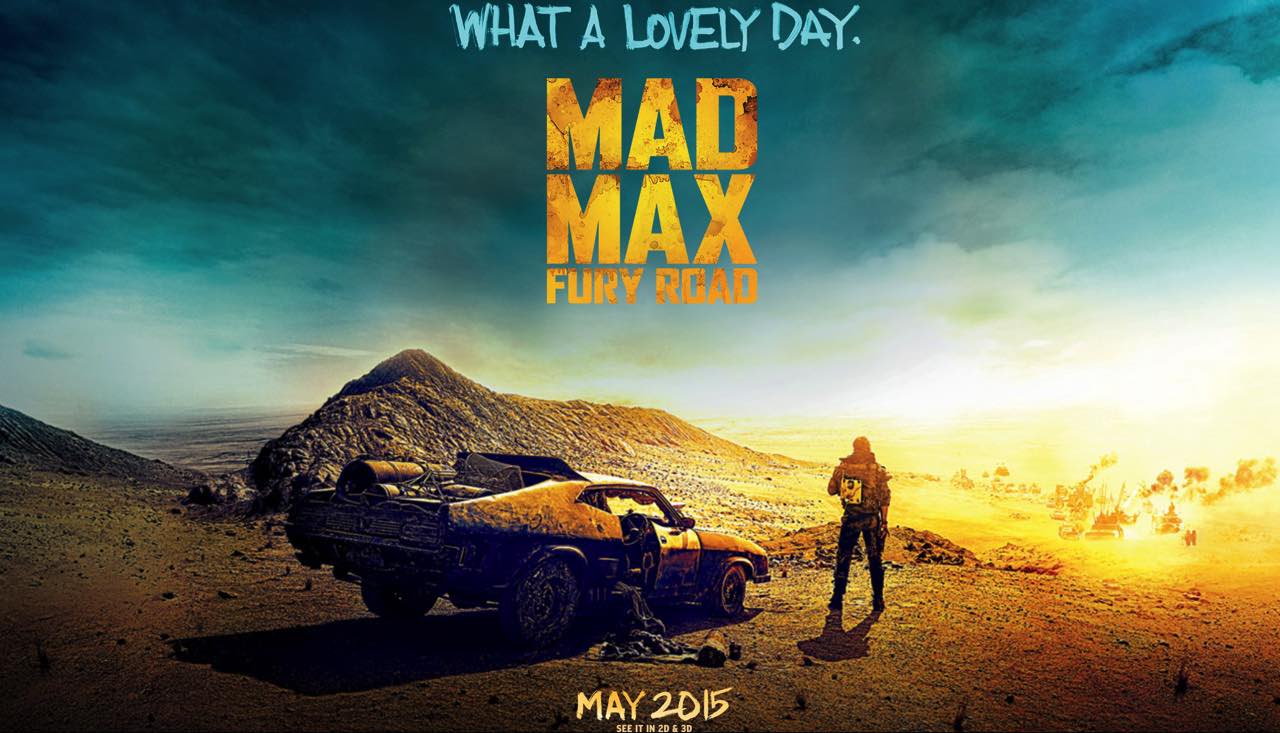
Since childhood, the Road Warrior series has existed in the same realm of mythic action blockbusters as the Star Wars original trilogy, Indiana Jones, Back to the Future, etc… even though they were so totally different in texture and genre. Nonetheless, it felt like director George Miller was operating on the same level of world-making albeit on a far smaller budget and with a more punk rock, dangerous feel.
Flash forward 30+ years, past his strange but even more successful journey in to the “Babe” and “Happy Feet” series, and George Miller proves again that he has more energy, creativity, and action blockbuster adreneline running in his 70 year old veins than all of the younger blockbuster directors half his age (yes, JJ Abrahms and Joss Whedon included).
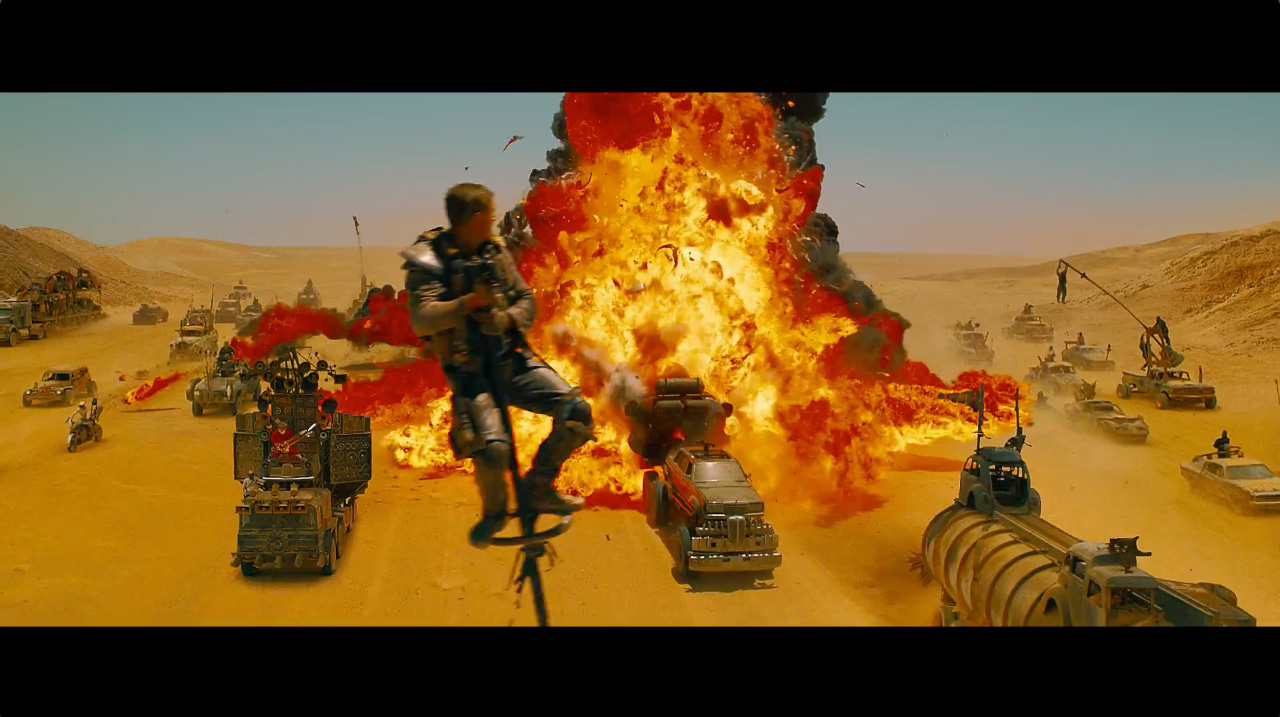
There are “films” and there are “movies” and Fury Road distinctly falls in the second category, gliding effortless like some crazy, distilled, freebased movie drug working it’s chemicals in every sensory nerve. I understand many people might be turned off by the excess spectacle, but I prefer to celebrate this directorial masterpiece as the absolute peak of movie-making – visions, rhythm, and choreography that demand multiple viewings on the big silver screen.
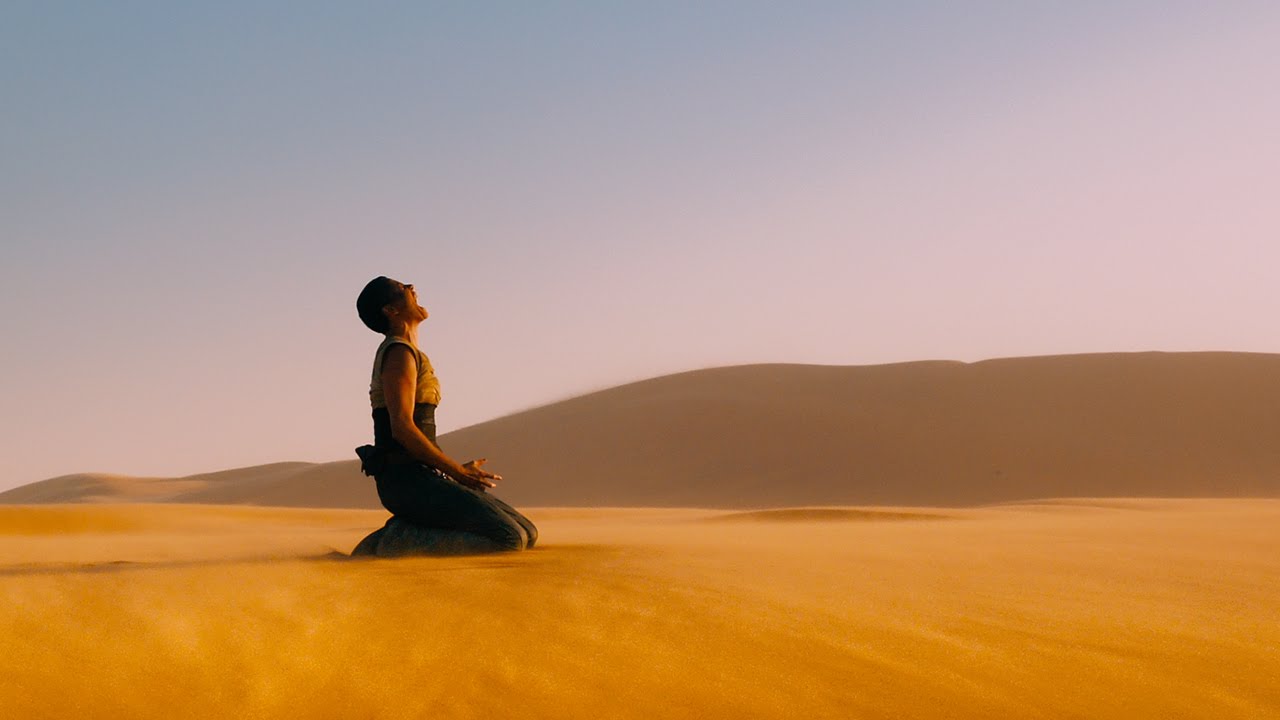
I’m disappointed that Miller didn’t receive Best Director at the Oscars this year.
2. Room
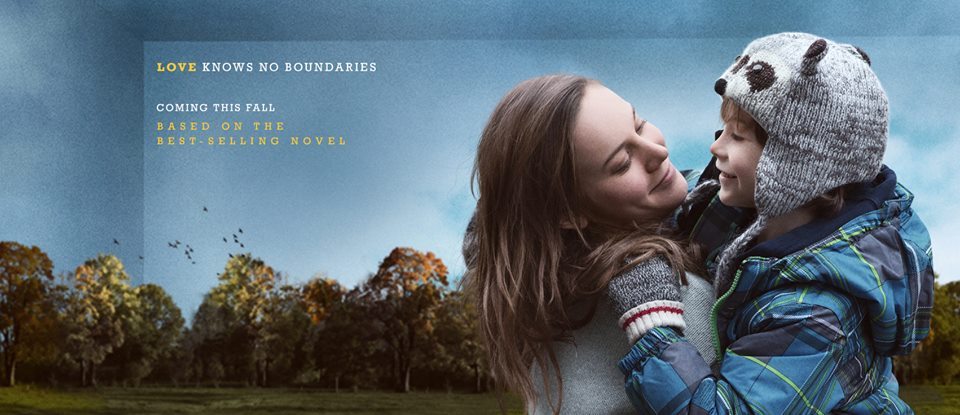
The less you know about this film, the better. If you haven’t heard or seen this film, I would advise stopping here and watching it with as little knowledge as possible.
That being said, I’ll say that this film is just ambitious as “Mad Max: Fury Road”. It’s also as ambitious as “Boyhood”, my favorite film from 2014.
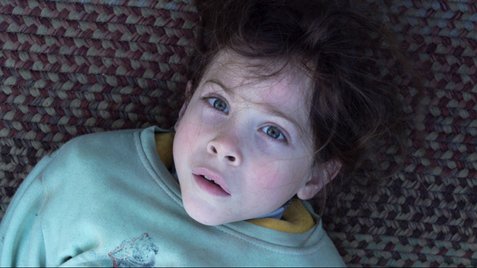
The film has been marketed with a high-concept: mainly that a mother and kid are locked in a room with almost no contact with the outside world for years on end. Certainly most of the attention had been paid on the first third of the film and how much thought has been paid towards the concept of a kid who has never seen the outside of the same four walls. Much has also been said about the amazing Brie Larson.
However, what really stood out for me was the subtle finesse and grace in the second part of the film when we break out into the greater world and see the ripple effects of the original crime. The film does a great job of portraying the viewpoint of five-year old Jack as he ventures outside for the first time. I loved the complex details of each of the supporting characters – the grandparents. the step-grandfather, the doctor, etc. In particular, a gripping scene in the middle of the film when a bit of excellent police work by a small supporting character leads to possibly the biggest applause moment of 2015.
Both “Mad Max: Fury Road” and “Room” lead as my favorite films of 2015 because they speak the special language of film so well and in such an ambitious, but different ways and couldn’t be done by any other medium.
3. Creed
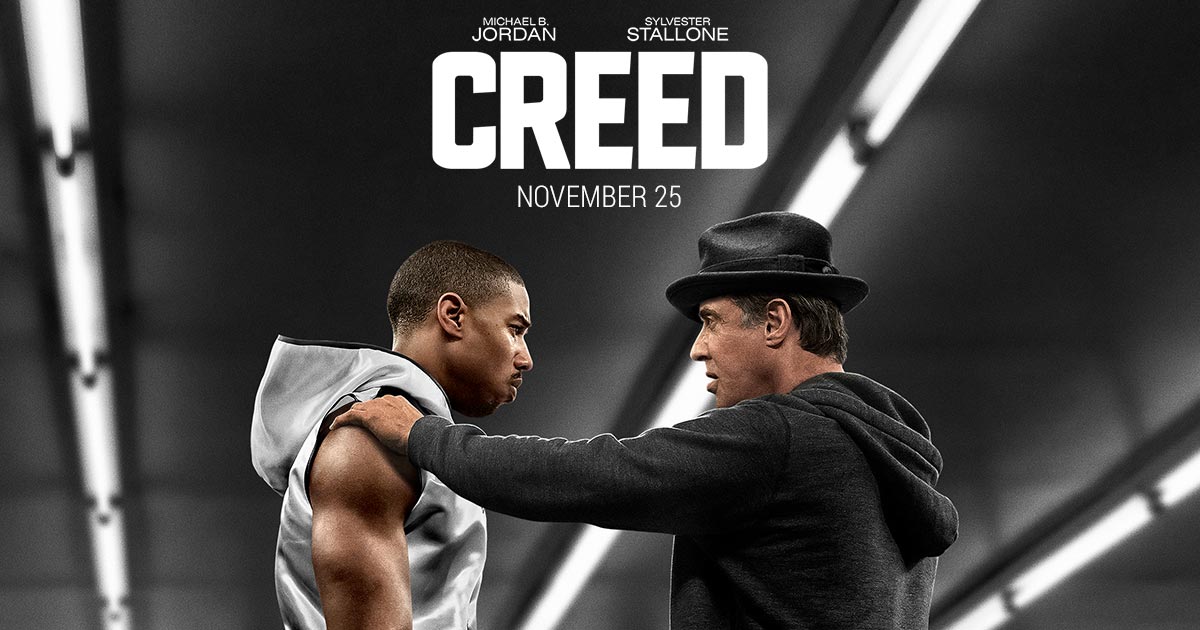
“Creed”, unlike the prior two movies, doesn’t quite have such an ambitious agenda. It’s an out-and-out crowdpleaser that happens to contain some performances and characters that are far better than expected for this kind of movie.
I’m already a huge Michael B. Jordan fan since “Friday Night Lights” and his seeming inevitable climb to being one of Hollywood’s greatest new stars is cemented by this performance. He’s always charismatic and a standout in all if his performances, but his portrayal in this film as an upper-middle class African American fighter with a chipmon his shoulder in a typically lower class sport is so specific that I feel like I’ve met and grew up with this character. This specificity extends through other performances.
Director Ryan Coogler knows just how to get the best from Stallone, letting the elder boxing trainer with one foot out the door into the next life play for maximum sentiment. Something tells me that Coogler is a big “Cosby Show” fan. Of course, there is the awesome Phyllisa Rashad delivering her usual classy motherly performance with inner strength. However, I was also getting a strong vibe from Tamara Robinson as the love interest. Most definitely we haven’t had enough big film on-screen portrayals of upper-middle class African Americans that everything devolved to a comparison to a TV show from 30 years ago.
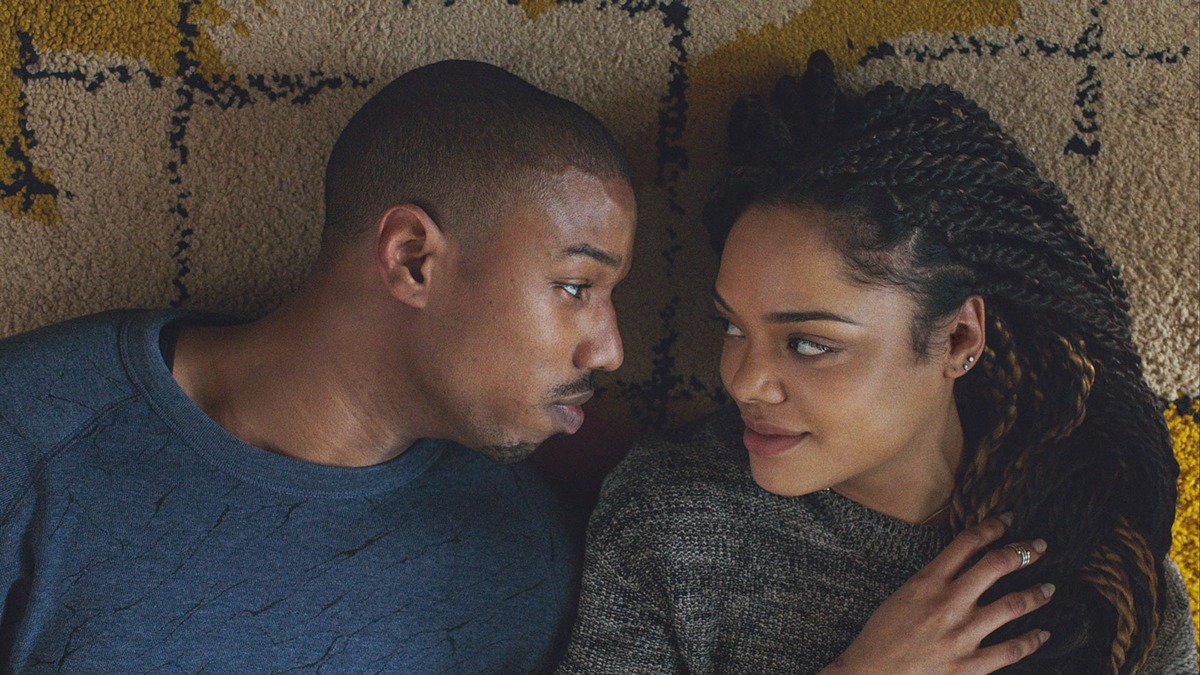
4. Brooklyn
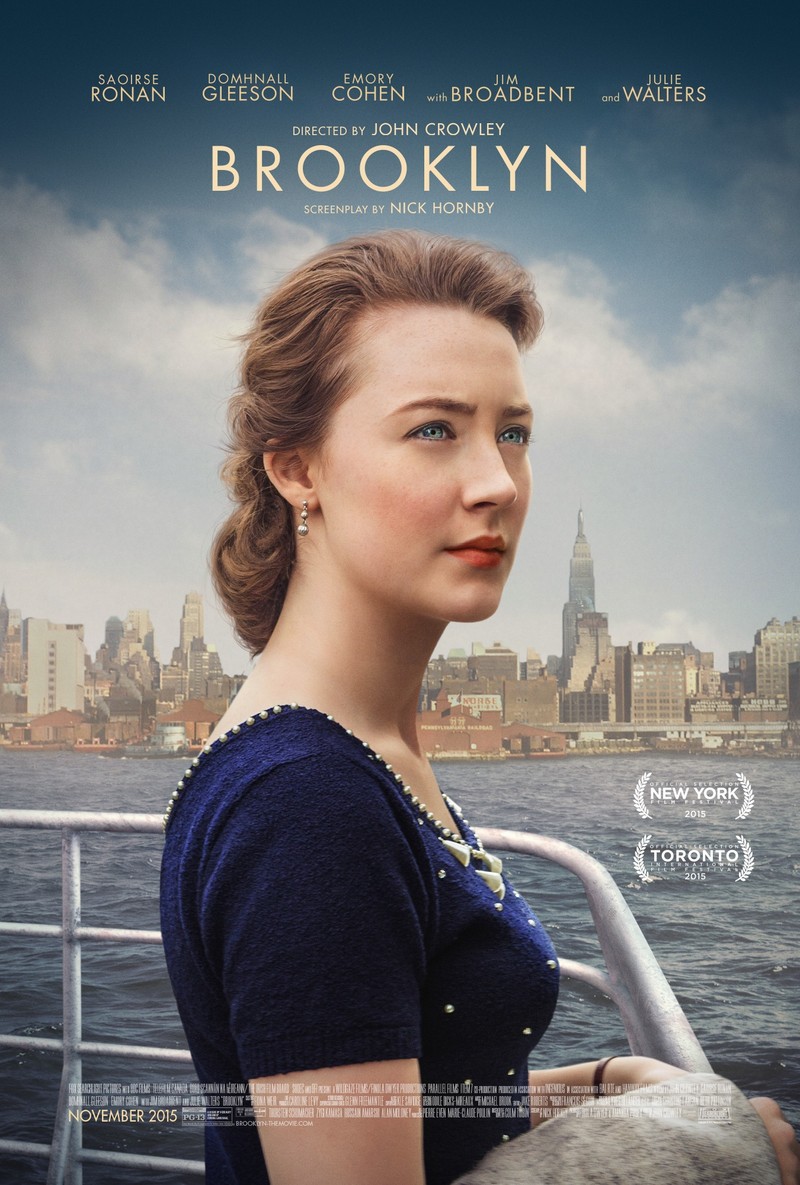
This is the feel-good, lovingly shot film that you can take your mother to (like I did). Like other films released in the late part of the year, the costuming is gorgeous, the characters tastefully acted, and it hits all of the right beats. Usually, I would question such Oscar bait-y films. Yet, there are many things to love about this film. Saoirse Ronan is an unlikely lead, but shines through in this star-making performance and will definitely be seen in many future roles. The camera loves her wide eyed, expressive face. Nick Hornby screen writes and finally does away with his witty but occasionally overbearing tendency for unnecessary voiceover and lets the actors do their acting work. The film is populated with a dozen lively supporting roles that each have their own complexities. I was happy to watch the film twice and can safely recommend it for just about everyone.
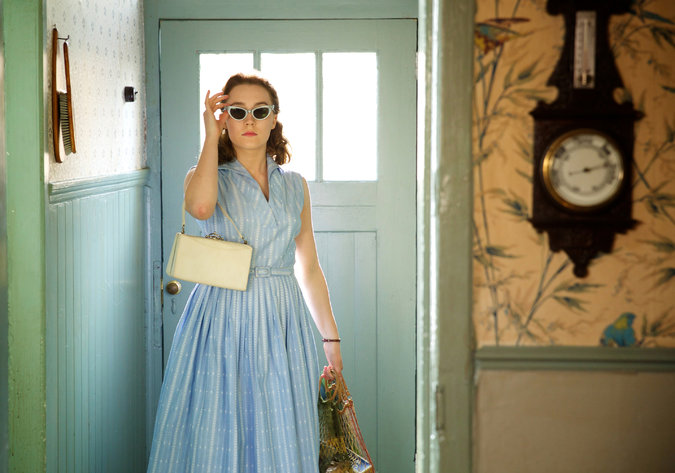
5. The Martian
It was really tough to choose between Spotlight and The Martian for the last spot in the Top Five, but ultimately I have to go with the film that I feel like I’ll probably be re-watching (I’ve already watched it twice). I don’t think I need to go on further about how humorous and fun and awesome the movie makes science doing science-y work feel like. I will say that this is Ridley Scott returning to portraying interesting characters working together in an interesting team dynamic. Usually, his brother Tony Scott gets more recognized for this kind of “men being men in the military” kind of film, but Sir Ridley occasionally also excels when he reaches into this territory (or in this case, men and women being awesome together).
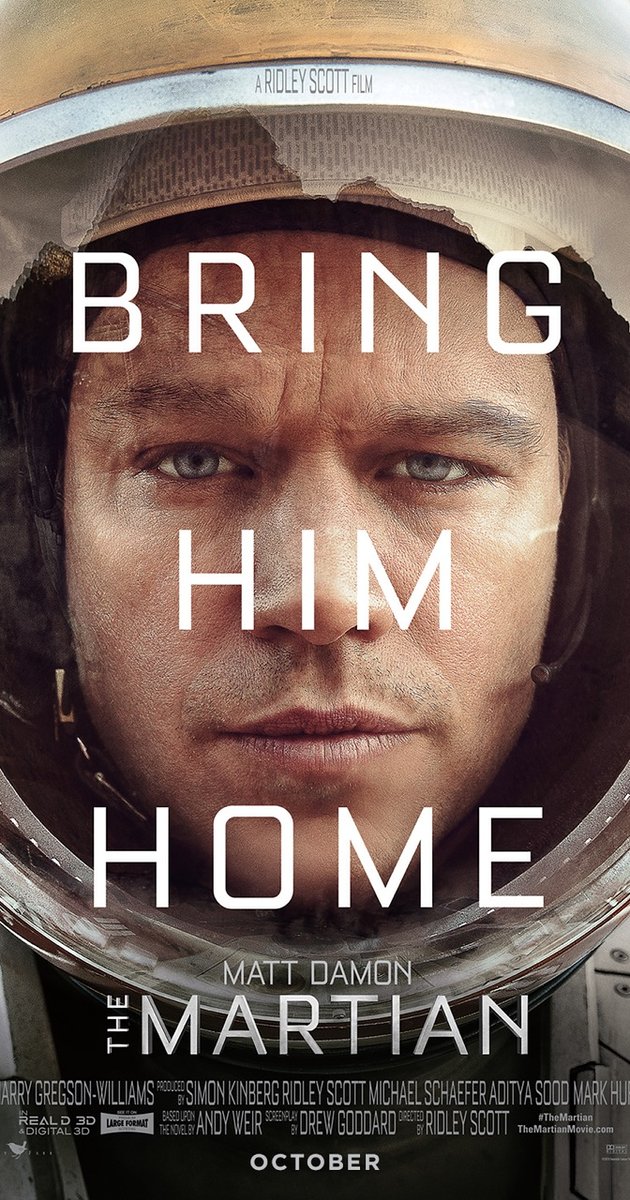
6. Spotlight
A great procedural drama… Everyone talks about Mark Ruffalo’s climax speech (something which inevitably play eventually in his “In Memoriam” clip), but I didn’t really grok to his performance — it seemed more like mimicry and took me out of the film. Instead, I really appreciated a lot of the smaller supporting performances: Liev Schreiber’s super-understated character with some fascinating choices. The handful of adult molestation victims were essentially cameo roles, but really were some of the best performances of the year. These were the things that stood out for me rather than the procedural flow of the film.
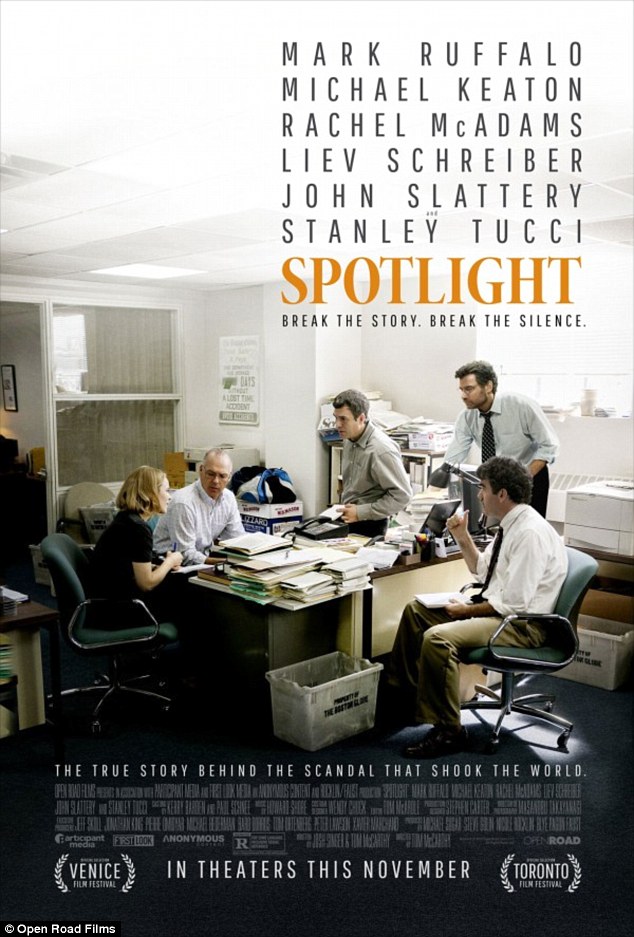
7. Spy
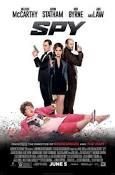
Comedies never get enough recognition come awards season, but there was ONE spy movie this year that excelled and it certainly didn’t have 007 in it.
8. Ex Machina
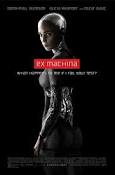
Cool, sleek, and with an fascinating performance choice by Oscar Isaacs. It didn’t quite hit me quite as much as Her, but certainly had enough interesting points to it.
9. Paddington
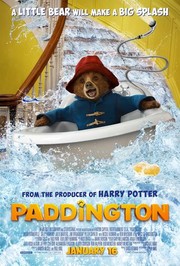
Released at the very beginning of 2015, this film had a horrible trailer but turned out to be a quirky, loving, and surprisingly good kids movie.
10. The Revenant
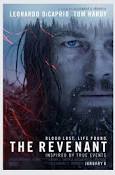
I feel like Innaritu’s films are getting more and more about the spectacle and less about character. I’m placing this on my list just because of Emmanuel Lubezki’s miraculous cinematography and not because I especially liked the film or Leo’s performance.
Honorable Mentions
Ant Man 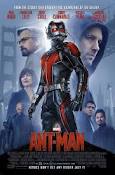 Star Wars: The Force Awakens
Star Wars: The Force Awakens 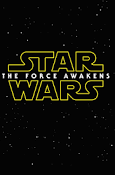 Inside Out
Inside Out 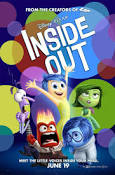 Sicario
Sicario 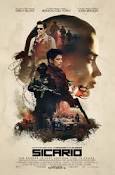 Steve Jobs
Steve Jobs 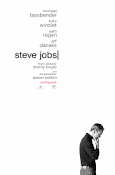 The Big Short
The Big Short 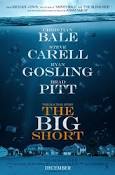
Dishonorable Mention
Jurassic World: In a year with amazing female performances and characters (Furiosa in Mad Max, Brie Larson in Room, Melissa McCarthy in Spy, etc.) this movie seemed hopelessly out-of-date with it’s “women in peril” themes.
Product Growth Metrics
Below is a presentation that I delivered to aspiring entrepreneurs at the Cross Straits Startup Weekend event in Xiamen, China. The presentation is in Chinese, but the metrics hopefully can be used for products of all types.
Mainland China viewing link here.
Thank you, thank you, Roger Ebert
I’d like to share some of my personal memories with Roger Ebert upon hearing of his passing this morning:
• Witnessing a slightly tipsy Roger break out into a broadway song medley at the piano during the close of one of his Ebertfests. Thank you, Roger, for inviting me to take part of your personal movie extravaganza that you shared with your fans.
• Sharing a conversation on the beach with him in Bahamas while on his “Ebert & Roeper Sea Cruise”. He seemed a fantastic, loving step-grandfather and babysitter to his rambunctious grandkids. Chaz was wearing our bright orange “FRESH” tomato t-shirt and said it was her favorite and most comfortable shirt. 🙂
• Sharing an afternoon with Roger in Seattle the week before the debilitating surgery that would take away him away from the TV screen. While we never did get to complete our partnership deal that would have provided spotlights of the Tomatometer and Roger’s reviews on our respective web sites, he remained hopeful and supportive of the possibilities of our online media.
• I messaged him with a photo of his face emblazoned on a big billboard in the middle of a very busy intersection in Beijing which he found unbelievable and wished he could have explored China more.
• And, of course, my childhood memories of my favorite “Siskel & Ebert” moments, particularly he brawl over Eddie Murphy “Raw” (sorry, Roger, I agree with Gene on this one), “The Untouchables” (again, agree with Gene), “Hoop Dreams”, “My Dinner with Andre”, and “Dark City”.
It’s not often that you get to meet your childhood hero and I feel blessed for having met and received frequent words of support from a hero of mine.
Thank you, Roger. I watched you and Gene every weekend during my childhood and you inspired me and many of my generation with your enthusiasm and eloquence, elevating not just film criticism, but of all of film.
My favorite films of 2012
Update (April 3, 2013): I’ve had a chance to go back and watch many additional films that were formerly on my “must watch” list. I’m so happy to discover some surprisingly good gems which I’ve now added to my Favorites of 2012 list.
I’ve tried to keep a personal list of favorite films every year. Unfortunately, the last three years in Beijing made it difficult to get access to some films (not available on BT, therefore not available in DVD stores). One of the benefits of returning to live in Hong Kong (since August) has been much better access to a greater variety of films. Unfortunately, many of these films get released many months after their initial releases in the States and sometimes (in the case of “Wreck-It Ralph”) even after their release in mainland China.
In any case, here are my Top Ten Films of 2012. Let me know what you agree or don’t agree with.
1. Beasts of the Southern Wild
Film-wise for me, most of 2012’s films were pretty disappointing. There was not a single film that I could wholeheartedly embrace… that is until I saw “Beasts of the Southern Wild” and fell in-love with magical filmmaking again. I haven’t been as excited about the power of film since the last gem that moved me so much, “Blue Valentine” in 2011. With only a slight nod to traditional narrative filmmaking (kind of a “hero’s journey” tale), but with dreamy visuals and striking natural acting and characters that defy anything that you’ve seen before, it’s the kind of surprise film that only a first-time filmmaker who hasn’t been tied down to big budgets, script notes, and the mundanity of the film factory system can make. I’ve watched it twice on my sofa now, but, even though it’s filmed in 16mm, I’m looking forward to watching it on the big screen when it’s shown here in Hong Kong next month.
The Oscar nomination for 9 year-old actress Quvenzhane Wallis is no gimmick. If anything, she is really rightfully should be nominated for “Best Leading Actress” as the film is told through her viewpoint, she remains on-screen for the entire movie, and she creates of the most unique and memorable characters (along with first-time actor Dwight Henry as her complex, charismatic, tough, but loving father) I’ve seen in a long while.

I was able to catch this documentary weeks after I initially wrote my first version of the list. It’s too bad that documentaries get separated into their own category at the Oscars, because this film easily qualifies for me as one of the best of the year. The film starts with profiling how a talented, but undiscovered musician in the 70s grows to become the sound of a generation of South African freedom-fighting youth. This falls in line with “truth is stranger than fiction” that only a select few documentary films can provide, but besides the fascinating sociological study of apartheid South Africa and a fantastic story arch, the film also is blessed with a truly memorable and compelling documentary subject in the form of the enigmatic singer Rodriguez. Like “Hoop Dreams”, my favorite documentary of all-time, this film brings together important social themes, a compelling main character, and a miracle story that unfolds quite naturally on-screen. I hope everyone has a chance to watch this under-the-radar film.
3. Lincoln
Spielberg and many of the technical artists behind-the-scenes probably expended a tremendous amount of time making this film historically accurate, but the marvel of this film is the artistic liberties that Daniel Day-Lewis takes to create a unique, fully-realized character from the most analysed historical figure of all-time. Cunning and impatient, but built of a strong moral compass, the character could be extracted from Lincoln and removed from all historical relevancy and still be a marvel to watch on-screen. For this, I think Daniel Day-Lewis is deserving of the Best Actor Oscar for the best acting portrayal on-screen in 2012. Criticism of the film for it’s occasional sentimental chords and the lack of a strong African-American viewpoint are on-track, in my opinion, but Daniel Day-Lewis’ unique portrayal uplifts what would be a less memorable, more mediocre film like “Seabiscuit”.
Unlike many film fans of my generation, I’ve withheld my embrace for Wes Anderson. I’ve enjoyed the style and soundtrack to his films, but I’ve always felt that he lacked full maturity as a filmmaker. It’s felt like to me that he always needed a couple more productions to elevate his story-telling abilities to match his brilliance in production craft.
“Moonrise Kingdom” is the first Wes Anderson film where I feel he has finally reached his full potential as an artist. For me, the story and tempo are as well-honed as the production itself.
This is the first Disney CG-animated film under John Lassiter’s reign where I feel they finally getting close to matching Pixar’s story-telling abilities and the voice-over actors aren’t filled by stunt-casting big-named celebrities at the expense of quality voice-over. There are so many jokes so well-aimed at people of my Atari/Nintendo/Halo generation, that it was a delight for me (but probably not anyone much older than me) to watch.
Although it has a natural appeal to foodies everywhere, this film is much more about the certain professionalism, almost neurotic-level obsession with craft that the subject has with sushi. It’s strength is the slightly tragic undertone that underlies the story: While we marvel at the mastery of detail that Jiro has perfected with sushi, we also sympathize for the lost attention and humanity when it comes to his two sons who, as sushi masters in their own right, have been partial sacrificial lambs to Jiro’s obsession. This is what makes the documentary a fascinating character study rather than just an exploration of food.
7. Arbitrage

I’m not usually a fan of either Richard Gere nor financial thrillers so I put off watching this film until after I had initially assembled my first draft of my Favorites list. However, this swiftly, well-acted film surprised and delighted me with it’s complex and adult-targeted story. Many lauds should go to Richard Gere and Susan Sarandon on their masterful performances.
I loved the first two-thirds of the film and was pretty let down by the remaining third. All of Tarantino’s energy and brilliance are included, but the real standout for me was Christoph Waltz’s performance. I hope he wins Best Supporting Actor at the Oscar’s this year.
It’s thrilling and chock full of small details that a news junkie like me can get pore over. The media coverage has concentrated on “Act I” where scenes of torture will likely have many moviegoers covering their eyes, but “Act II” remains the best part of the film for me. Obama’s declaration to end “enhanced interrogation” and the CIA actors to finally button-down and do more traditional detective work and spycraft to nail down UBL provides the most interesting part of the film.
10. Flight

Denzel Washington is still my favorite working actor, a leading man in the most compelling sense. Neither a character actor working in a single vein nor a master chameleon actor like Gary Oldman, he still puts together a memorable, varied performance with every film.
Another film where the first two-thirds of the story I feel were let down by the cutesy final third. With two interesting performance by Bradley Cooper and Jennifer Lawrence and an outstanding performance by Robert DeNiro (possibly his best in over a decade), the film is ultimate sabotaged in my opinion by an “end-cute”. If a “meet-cute” is an overused romantic comedy convention from films like “While You Were Sleeping”, the “end-cute”, to me, is an equally overused Sundance film convention starting from “Little Miss Sunshine” and continuing through to “Silver Linings Playbook”.
12. Chronicle
An overlooked film from 2012 because it’s sci-fi high school teenagers, but I felt that it should have been nominated for best original screenplay (although, like “Looper”, plot points and imagery are obviously heavily-lifted from “Akira”). I’m not a fan of Max Landis in interviews, but this doesn’t draw back from the fact that “Chronicle” is a great piece of screenwriting.
13. Looper
Along with “Chronicle”, “Looper” is the true emergence of young new screenwriting talent who are as equally influenced by animé visuals and story telling as they are from American comic books and Twilight Zone episodes. It’s great to see more mid-budget films like these that place an emphasis on ideas and story first rather than explosions and F/X gimmicks. I’m hugely interested in seeing what other stories director Rian Johnson has up his sleeve.
Honorable mentions: Perks of Being a Wallflower, Cabin in the Woods, The Avengers, Life of Pi, ParaNorman, Argo. Unfortunately, none of these films would do better than 7/10 for me … like I said, besides “Beasts of the Southern Wild”, I felt this was a pretty mediocre movie year. Nonetheless, I fully expect that “Argo” will be taking home “Best Picture” at the Oscars this year.
Still Need to Watch:
- Amour
- End of Watch
- Holy Motors
BarCamp Beijing: “Growth Hacker” presentation
I recently delivered an impromptu talk on “Growth Hacking”. Rather than speaking of specific, current tactics, I decided to give it a more long-term strategic views on how to approach product marketing from a “hacker’s” perspective. Rather than just talking about “viral loops”, I wanted to take a look at a broader perspective of how to take advantage of dominant distribution channels and to use them in under-utilized or unintended ways to grow your own product. I’m not a growth hacking expert (see the experts who I link to at the end of the presentation, but I think it’s relevant to everyone who is launching a new product whether online or not.
































































